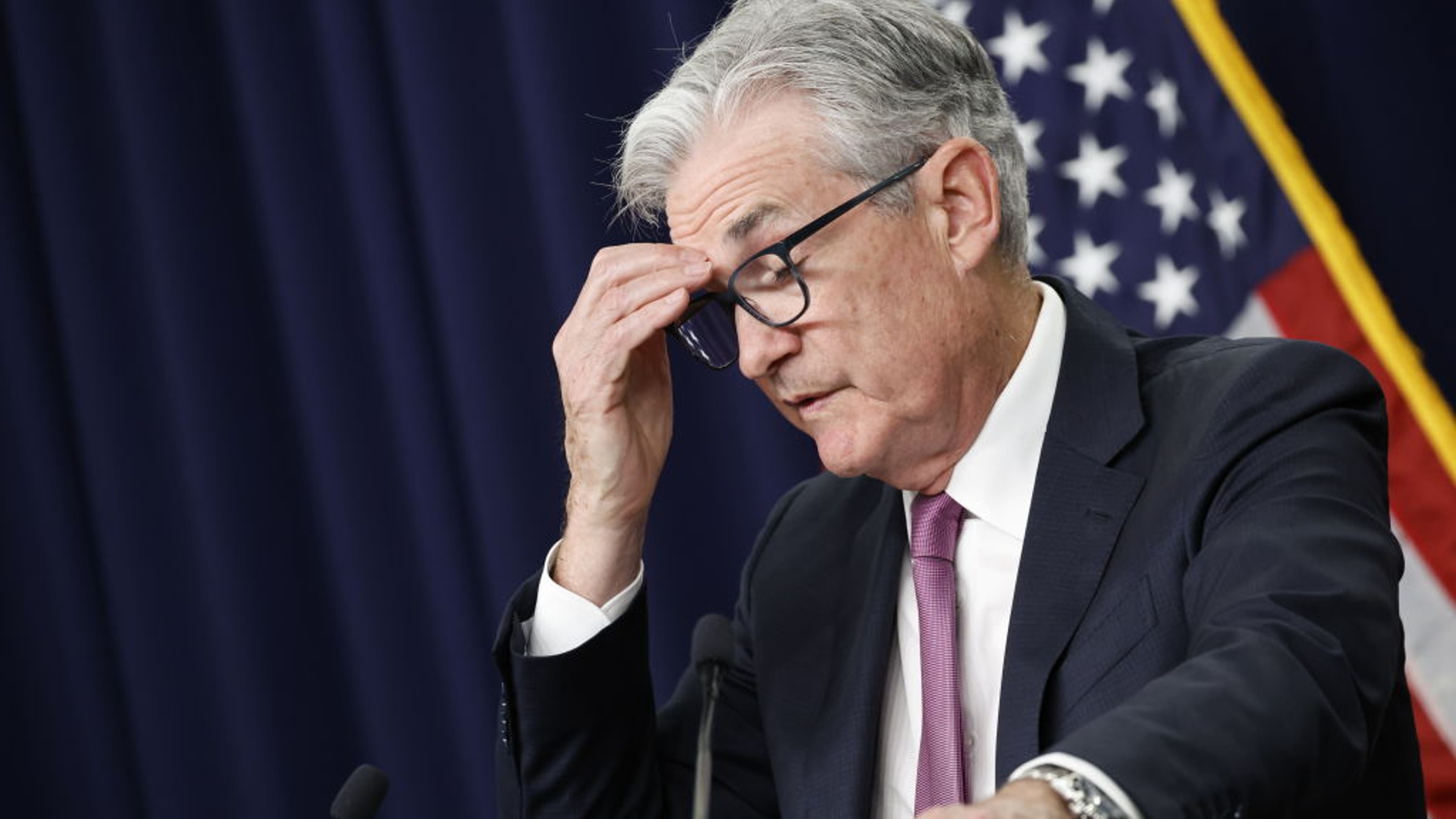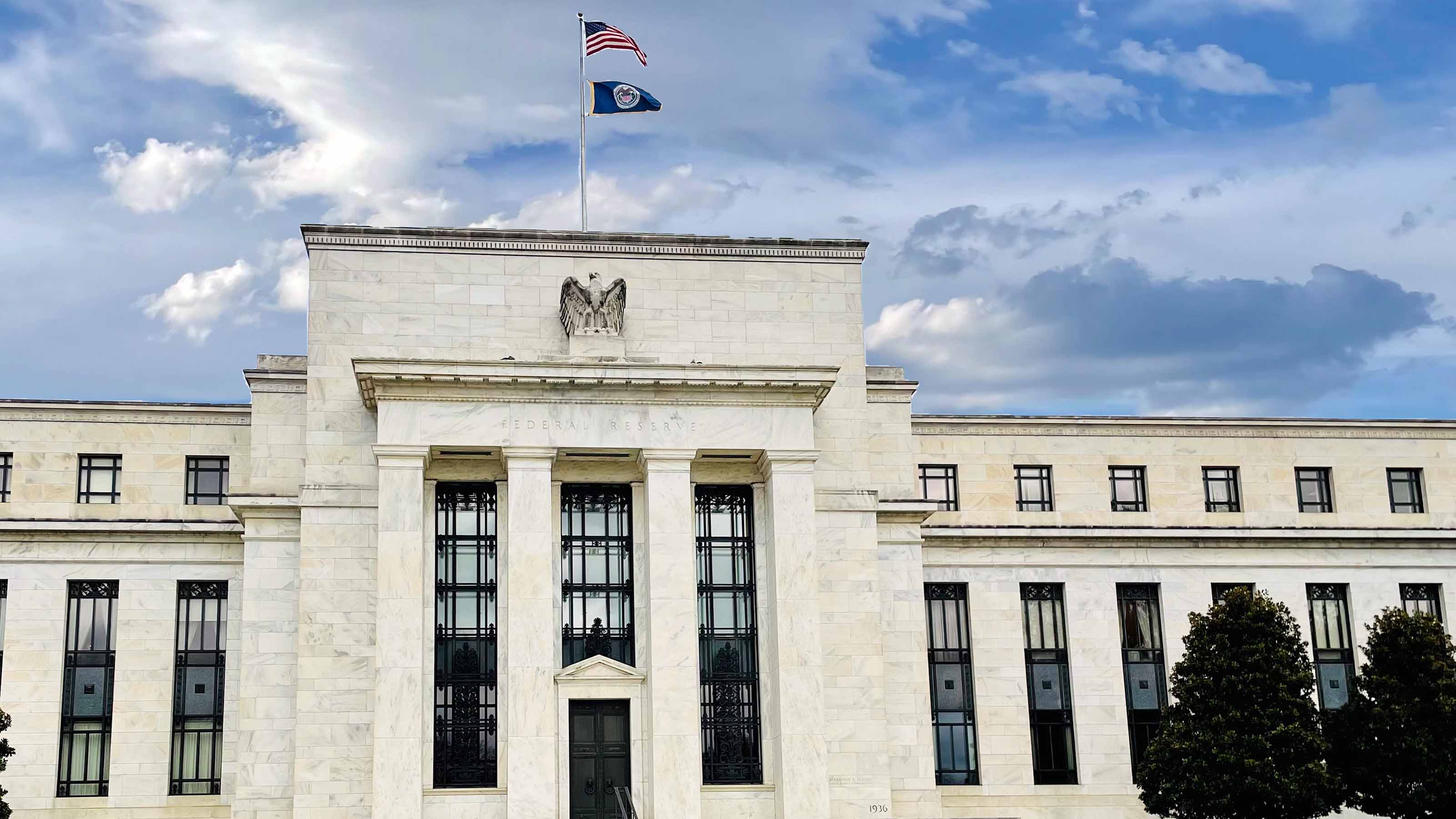Fed Resumes Interest Rate Hikes: What the Experts Are Saying
A hawkish Federal Reserve dashes hopes for a definitive end to rate hikes soon.


The Federal Reserve made the widely expected move of raising interest rates when it wrapped up its regularly scheduled two-day policy meeting on Wednesday. If there was any sort of surprise, it was that Fed Chair Jerome Powell left the door open to further tightening in 2023 and beyond.
There was little doubt that the Federal Open Market Committee would increase the short-term federal funds rate by 25 basis points, or 0.25%, to a target range of 5.25% to 5.5% at its latest confab. What was up for grabs was whether the central bank would signal a more dovish policy going forward.
After all, the FOMC paused its rate-hiking campaign last month in part because its hawkish stance against inflation appears to be working. The worst bout of rising prices to hit the U.S. economy in four decades peaked more than a year ago and is now running below long-term averages.

Sign up for Kiplinger’s Free E-Newsletters
Profit and prosper with the best of expert advice on investing, taxes, retirement, personal finance and more - straight to your e-mail.
Profit and prosper with the best of expert advice - straight to your e-mail.
Indeed, the June CPI report showed that annual inflation rose by 3%. Although that's lower than the 50-year average inflation rate of 3.9% (and the 100-year average of 3.2%), inflation remains above the Fed's 2% target.
The bottom line is that anyone hoping for a softer turn from the Fed on interest rates came away disappointed – if not outright confused. The FOMC – after raising borrowing costs 11 times over its past 12 meetings – issued a strongly hawkish statement Wednesday even as it declined to commit to further rate hikes.
With the fed funds rate sitting at a 22-year high, market participants are quite reasonably wondering where the central bank is headed at the next Fed meeting.
With the FOMC's latest rate hike now a matter of record, we turned to economists, strategists, investment officers and other pros for their thoughts on what the move means for markets, macroeconomics and monetary policy going forward. Please see a selection of their commentary, sometimes edited for brevity or clarity, below.
What the experts are saying

"Paradoxically, today's Fed meeting was one of the most certain and uncertain of the cycle. A 0.25% rate hike was fully priced in and widely expected by forecasters and investors. However, investors remain divided on whether this marks the last increase in the current tightening campaign. We think recent data is consistent with the U.S. policy rate peaking in July, as core CPI inflation slowed sharply in June. Given the uncertainty around when the Fed's hiking cycle will conclude, we have limited exposure to U.S. rates. We think further disinflation progress will limit the extent to which U.S. Treasury yields will rise, while a resilient labor market and economy will temper the extent to which yields can fall." – Gurpreet Gill, global fixed income macro strategist at Goldman Sachs Asset Management
"In our opinion, the rate hiking cycle is done and the Fed will now pause for the rest of the year. The latest market reaction also supports this thesis with yields dipping slightly across the front end of the yield curve. We expect Fed Chair Powell will keep his options open and likely use the upcoming Jackson Hole conference to send any stronger messages if needed, as more data will be available by then." – Rajeev Sharma, managing director of fixed income at Key Private Bank
"It's our forecast that the tug-of-war between the economic headwinds and tailwinds during the coming months will tilt to the former, causing enough growth deceleration and disinflation to turn a September skip into a more prolonged pause. In other words, welcome to terminal territory (but we still have net upside risks surrounding our Fed call)." – Michael Gregory, deputy chief economist at BMO Capital Markets
"This hike was probably one of the more well-telegraphed FOMC moves in the past year. The Fed was expected to tighten by 25 basis points, and they did just that. It was a 'nothingburger,' but that isn't a bad thing since it gives the Fed plenty of time to analyze a host of future economic data until its next meeting at the end of September. In the meantime, watch the Employment Cost Index, which Powell singled out. That could be the next market-moving data point, and it's due on Friday. The Fed is interpreting the economic data just like the rest of the market, so even the central bankers don’t know yet if they’re done tightening rates or set to embark on a prolonged pause. We're all back to being data dependent. Remember, as inflation falls the Fed's monetary policy automatically becomes even tighter given that the real, inflation-adjusted Fed funds rate increases." – Jack McIntyre, portfolio Manager at Brandywine Global
"The Fed made the quarter percentage point rate hike expected by financial markets at today's decision and held other aspects of its monetary stance steady. They modestly upgraded their assessment of the economy but otherwise made essentially no changes to forward guidance. The Fed is likely to skip seriously considering a rate hike at its next decision in September, setting up the November 1st decision as the next time there is a large possibility of a hike. With core inflation on course to slow between now and then, the Fed will probably refrain from further rate hikes. In other words, rates have likely peaked for this cycle." – Bill Adams, chief economist at Comerica Bank
"The Fed is in wait-and-see mode. They're going to get two more months of employment and inflation data before the September meeting, so there's no reason to make any changes now. You've heard of the Bernanke put, but this is more like a Powell punt. Investors can now put this behind them and get back to earnings." – David Russell, vice president of market intelligence at TradeStation
"No surprises from the Federal Reserve as they moved forward with the anticipated hike after pausing at the June meeting. Things may get interesting into the fall as the Fed tries to navigate opposing forces of moderating inflation with the strong labor market and resilient economy to engineer the once thought unattainable soft landing." – Michael Hadden, senior portfolio manager at Brinker Capital
"The tightness in the labor market clearly has the Federal Reserve feeling uneasy. Even with another rate hike, I'm not sure we'll see the underlying conditions moderate in the near future. We saw a very strong start to the summer hiring season this year. There are fewer job openings and fewer people are voluntarily leaving their job for new employment compared to the last few years, but we've yet to see the loosening that the Fed is searching for. This is going to continue to be one of the more challenging labor markets to navigate for some time." – Chris Todd, CEO at UKG
"Today's action makes monetary policy incrementally more restrictive, and along with continued shrinking of the Fed's balance sheet, will begin to weigh on the economy over time. There has been debate within the Committee regarding the lagged effects of monetary policy, and by slowing the pace of hikes, the Fed is hoping to better see the impact of previous tightening as they evaluate future decisions." – Jeffrey Hibbeler, director of portfolio management at Exencial Wealth Advisors
"Today's FOMC press statement was a carbon copy of what was published at the last meeting six weeks ago. Sometimes, it is what is not said that speaks volumes — and in this case, no reference to the recent cooling in payrolls or the rapid decline in inflation is a clear message that the Fed is still worried that its target remains in jeopardy. By saying nothing, this is rather hawkish at the margin. Leaving out any reference to how inflation has gone from the 9.1% peak to 3.0% speaks volumes." – David Rosenberg, founder and president of Rosenberg Research
"The statement left the door open for another rate hike if the data dependent Fed deems it necessary, but the tone of the statement was more neutral rather than decidedly dovish or hawkish. Still, it's clear that the Fed will raise rates again if the core rate of inflation doesn't edge lower at a faster pace even if the 'stickiness' has begun to untangle." – Quincy Krosby, chief global strategist at LPL Financial
"All in all, not much changed from the last rate hike in May. This rate hike did feel a little unnecessary therefore we believe we could very well have seen the last rate hike of this cycle. With inflation falling to 3% and rates now at their highest level in 22 years, the sense of urgency from the Fed is much less than it was during past meetings. The labor market is also weaker than this time last year which was noted by the Fed. The central bank will continue to be data-driven, but markets are cautiously optimistic about the prospect of tamed inflation and a pathway to lower rates." – Will Rhind, founder and CEO of GraniteShares
Get Kiplinger Today newsletter — free
Profit and prosper with the best of Kiplinger's advice on investing, taxes, retirement, personal finance and much more. Delivered daily. Enter your email in the box and click Sign Me Up.

Dan Burrows is Kiplinger's senior investing writer, having joined the august publication full time in 2016.
A long-time financial journalist, Dan is a veteran of MarketWatch, CBS MoneyWatch, SmartMoney, InvestorPlace, DailyFinance and other tier 1 national publications. He has written for The Wall Street Journal, Bloomberg and Consumer Reports and his stories have appeared in the New York Daily News, the San Jose Mercury News and Investor's Business Daily, among many other outlets. As a senior writer at AOL's DailyFinance, Dan reported market news from the floor of the New York Stock Exchange.
Once upon a time – before his days as a financial reporter and assistant financial editor at legendary fashion trade paper Women's Wear Daily – Dan worked for Spy magazine, scribbled away at Time Inc. and contributed to Maxim magazine back when lad mags were a thing. He's also written for Esquire magazine's Dubious Achievements Awards.
In his current role at Kiplinger, Dan writes about markets and macroeconomics.
Dan holds a bachelor's degree from Oberlin College and a master's degree from Columbia University.
Disclosure: Dan does not trade individual stocks or securities. He is eternally long the U.S equity market, primarily through tax-advantaged accounts.
-
 6 Stunning Waterfront Homes for Sale Around the US
6 Stunning Waterfront Homes for Sale Around the USFrom private peninsulas to lakes, bayous and beyond, Kiplinger's "Listed" series brings you another selection of dream homes for sale on the waterfront.
By Charlotte Gorbold Published
-
 Six Reasons to Disinherit Someone and How to Do It
Six Reasons to Disinherit Someone and How to Do ItWhether you're navigating a second marriage, dealing with an estranged relative or leaving your assets to charity, there are reasons to disinherit someone. Here's how.
By Donna LeValley Published